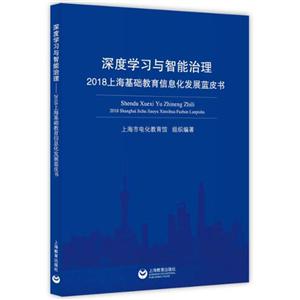西方哲学史:原著注释版

|
西方哲学史:原著注释版作者:(美)弗兰克·梯利(Frank Thil 开 本:26cm 书号ISBN:9787558139901 定价:98.0 出版时间:2018-03-01 出版社:吉林出版集团股份有限公司 |
ⅩⅩ. Reaction against Rationalism and Idealism
Index
西方哲学史:原著注释版 节选
Preface to the Revised Edition THE FIRST edition of the late Professor Thilly’s A History ol Philosophy appeared over thirty-five years ago. Few books in the fields of philosophy or history have maintained undiminished popularity as texts and usefulness as reference works over so long a period. The remarkable vitality of Professor Thilly’s work may be traced to its original conception and execution. Perhaps the outstanding characteristic of Professor Thilly’s approach to the history of philosophy was the objectivity and impartiality of his historical attitude, which escaped the distorting effect of a dogmatic interpretation of historical development. Professor Thilly allowed the philosophers to speak for themselves and, in the conviction that the later systems in the history of philosophy provide the criticism of earlier schools, kept his own criticism to a minimum. Professor Thilly’s own two major philosophical commitments were to idealism and rationalism, but he did not allow his own philosophical biases to obtrude in his account of the historical figures with whom he dealt. Indeed, if anything, he was frequently more successful in the presentation of historical theories with which he was in disagreement than of those with which he was in sympathy. His idealism was not of the dogmatic Hegelian variety, but was closer to the critical idealism of Kant. Professor Thilly considered mind an indubitable fact whose existence was guaranteed by introspective experience. His idealism was, however, not a subjectivism which denied the external world or reduced it to the status of mere appearance, and his rationalism insisted that experience, or nature, has rational structure and coherence which render it intelligible to man’s rational mind. His was not a dogmatic rationalism of the Cartesian variety which posits innate, self-evident truths, but rather a critical rationalism, which considers the basic truths of mathematics and the underlying assumptions of science and philosophy to be indispensable presuppositions of an intelligible world. A second feature of the book which explains its sustained success is the sense of proportion displayed in the presentation of thinkers in their place in philosophical movements. Without adopting an Hegelian dialectic of the history of philosophy, Thilly discerned an inner logic in historical development. Individual thinkers were integrated to movements, and the movements in their turn formed parts of a larger historical pattern. His recognition of the inner logic of the historical process did not, however, prevent his giving due recognition to the social, political, cultural, and personal or temperamental factors which influence individual philosophers. Thilly’s assimilation of philosophers to movements was particularly skillful in his organization of the modern period. Bacon and Hobbes were grouped together as two relatively independent figures who, while not properly part of the British empiricism of Locke, Berkeley, and Hume, prepared the way for it. Descartes and Spinoza were considered together as the founders of continental rationalism, and Leibniz, instead of being included, as was customary, as the third in the triumvirate of rationalists, was introduced after British empiricism as a philosopher of the enlightenment. A third feature was the clarity and simplicity of Professor Thilly’s style. In discussing with me the composition of his history Professor Thilly told me that the book grew out of a study of the history of philosophy written with no intention of publication, but solely for the purpose of clarifying his own understanding of the historical philosophers and their relations to one another. This clarification which Thilly achieved for himself pervades the entire exposition. Professor Thilly’s interest in the history of philosophy was not that of the historical antiquarian who seeks merely to record the achievements of the past, nor was it primarily that of the historian of ideas who merely traces the continuous history of ideas and conceptions. It was that of the philosopher who seeks philosophical illumination in the history of his subject. He thought of the history of philosophy as a repository of philosophical ideas from which the philosopher draws his materials and his insights. He rejected the study of the history of philosophy merely for its own sake, but at the same time deplored the pseudo-originality of those who are ignorant of the philosophical achievements of the past. The study of the history of philosophy, he said in his introduction, “serves as a useful preparation to philosophical speculation, passing, as it does, from the simpler to the more complex and difficult constructions of thought... The man who tries to construct a system of philosophy in absolute independence of the work of his predecessors cannot hope to rise very far beyond the crude theories of the beginnings of civilization.” This Professor Thilly conceived to be the value of this historical study for himself, and this is the value he hoped it would have for his readers. I have tried in the present revision to preserve the objective and impartial attitude of the original, and have retained the basic organization except when modification seemed to be indicated by the altered historical perspective. Considerable new material has been introduced, particularly in introductory and transitional sections. In section I the religious sources of Greek philosophy have been traced, in the light of the work of such histories as Cornford’s and Jaeger’s, to indicate more clearly both how Greek philosophy emerged from Greek religion and the essential differences between philosophy and the religion from which it arose. The organization of sections 5 and 6 has been recast so as to emphasize the differences between qualitative and quantitative theories and to give greater prominence to the quantitative atomism of Democritus. In the section on Plato I have prepared new material on the “Hierarchy of the Sciences,”“Cosmology,” and the “Doctrine of Immortality,” and in the section on Aristotle, material on “The Four Causes” and “Aristotle’s Genius and Influence” has been added. Sections 17, 20, and 22 have been entirely rewritten, so as to provide a more adequate transition from the ancient to the medieval period, and also to afford a preliminary survey of scholasticism. The most extensive changes and additions have been made in Part Three, on Modern Philosophy. The sections on the “Philosophy of the Renaissance,” which, in Professor Thilly’s arrangement, were appended to “The Decline of Scholasticism” in Part Two, have been reoriented and transferred to Part Three. In the section on Kant I have added material on “The Transcendental Method,”“Preliminary Analysis of Experience,” and “The Unity of SelfConsciousness,” in order to clarify Kant’s philosophical method and to differentiate it more sharply from the methods of empiricism and rationalism. A comprehensive account of Nietzsche is presented in section 66; it considers Nietzsche in the historical context of German philosophy rather than, as did Professor Thilly’s treatment, in the context of contemporary pragmatism.
哲学/宗教 哲学 世界哲学
在线阅读
- 最新内容
- 相关内容
- 网友推荐
- 图文推荐
| [高考] 2022 西安电子科技大学《软件工程》大作业答案 (2022-04-25) |
| [家长教育] 孩子为什么会和父母感情疏离? (2019-07-14) |
| [教师分享] 给远方姐姐的一封信 (2018-11-07) |
| [教师分享] 伸缩门 (2018-11-07) |
| [教师分享] 回家乡 (2018-11-07) |
| [教师分享] 是风味也是人间 (2018-11-07) |
| [教师分享] 一句格言的启示 (2018-11-07) |
| [教师分享] 无规矩不成方圆 (2018-11-07) |
| [教师分享] 第十届全国教育名家论坛有感(二) (2018-11-07) |
| [教师分享] 贪玩的小狗 (2018-11-07) |






